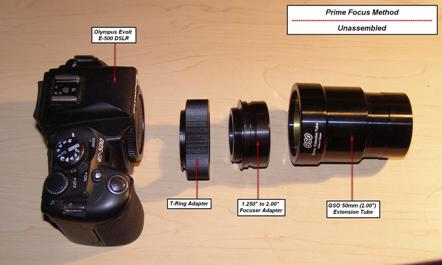|

With the acquisition of a StellarVue SV80ED 80mm f/7 "Nighthawk Next
Generation"
achromatic refractor in early 2013, I decided to utilize its slightly
longer focal length and fine optics to replace the Scopos 80mm f/6
apochromat I owned, which I promised to my friend and colleague Gary
Barabino once he visited me in December of 2013, to begin a new series
of solar images. But, before doing so, I wanted to capture as many daily
images with the Scopos 80/480 as possible before Gary's departure.
(Gary and his wife Jane arrived at the
VSC-2 here in Riverview, FL on the morning of 12/03/2013.) I
managed to capture images with the Scopos and Olympus Evolt E-500 DSLR
up until 12/05/2013, before handing the Scopos over to Gary to take back
to the VSC-1 in Slidell, LA.
With the advent of this new series of solar images, I look forward to
posting better images with the Stellarvue SV80ED 80/560 and Olympus E-500
prime-focus combination. Despite possessing a doublet objective, the
Stellarvue renders equally stunning CA-free views of Sol, along with a
pinch of additional magnification. In moving to the Stellarvue
refractor, I believe it is going to foster a really nice collection of
solar images for quite some time to come.
Unfortunately, as with the
previous series of solar images,
there will be days when the weather conditions may not be favorable to
allow me to get an image for one day, or even a run of days like I
experienced between December 27, 2013 thru December 30, 2013. I hope
these gaps will be far and few. In any case, despite the short falls, i
hope everyone visiting this collection of images will fine them
inspiring and satisfying. For i do this for all who shares the great
indulgence of amateur astronomy.
Now, let's discuss the method I used to
get these images. One might think that this huge collection of images
may have been put together with great effort. Au contraire! Actually,
once I developed my method, it only took no more than 15 minutes to
setup, get my series of images to choose from, and have one ready for
posting. The DSLR camera settings established for my particular setup
are
as follows: Manual selection on the main dial --
Shutter Speed: 1/640th and 1/640th of a second -- ISO: 100 -- Image Quality: SHQ -- White
Balance: 0. One of these days, I will post a video that shows the steps I go through to
capture my
shots. In the meantime, please enjoy checking out the photos of Sol
I have posted by placing your mouse cursor over the
"Sequential Solar Obs Pages"
button shown above and clicking on the date range of interest from the
drop-down list.



The above pictures shows the Prime
Focus imaging method setup I used to capture the majority of the solar
images displayed in the collection contained herein. The photo on the
left conveys an view of the setup exploded to show the individual
components used. The image on the left shows the setup assembled. Click
each images to enlarge!

Thanks, and Clear
Skies, Forever!!!
Mel Dawson


|



